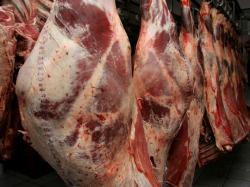USDA Releases Strategies To Reduce E. Coli Levels At Beef Slaughterhouses
March 16, 2015 | 2 min to read

Reduction of E. coli O157 illnesses since the mid-1990’s has been one of the Food Safety and Inspection Service’s greatest public health successes, with illnesses having dropped by over 50% since 1998. While overall illnesses are down significantly, the most recently available outbreak data shows a slight increase in illnesses from this dangerous pathogen. FSIS’ Strategic Performance Working Group (SPWG) has released a six-point strategy to turn the trend back in the right direction.
The Strategic Performance Working Group includes professionals from across FSIS, including field personnel, microbiologists, and policymakers who come together periodically to tackle serious and stubborn challenges that limit the Agency’s successful performance of its mission. The SPWG previously developed the Salmonella Action Plan, which has been the agency’s blueprint for tackling Salmonella since December 2013. Now the SPWG is also recommending a multipronged approach to address pathogenic E. coli in beef slaughterhouses.
The SPWG determined that a reduction in O157 could be achieved in two ways. First, the Agency needs to improve how FSIS inspection personnel verify plant performance of sanitary dressing procedures through better training, more correlations, and developing a standard to assess industry’s performance of sanitary dressing. Drawing on the experience of its members, the SPWG also stated that the training would be most effective if it included photographs and real-world scenarios to effectively illustrate the issues discussed in the documents.
To read the rest of the story, please go to: USDA Blog
